
What is Kanazawa?
Kanazawa is a historic city on Japan’s west coast, facing the Sea of Japan in Ishikawa Prefecture. Often called “Little Kyoto,” it boasts preserved samurai districts, traditional crafts, and one of Japan’s top three gardens—Kenrokuen. Unlike Kyoto, Kanazawa was largely spared during World War II, so many of its historical areas remain intact.
With a perfect mix of culture, cuisine, and walkable sightseeing, Kanazawa offers an authentic experience for those looking to explore Japan beyond the typical Tokyo–Kyoto route. It’s especially ideal for travelers interested in architecture, traditional arts, and slow-paced exploration.
History of Kanazawa
Kanazawa’s origins trace back to the late 16th century, when the powerful Maeda clan established it as the center of the Kaga Domain—then the wealthiest feudal domain outside of the Tokugawa Shogunate. Under the Maeda family, the city flourished as a cultural and economic hub during the Edo period. Unlike many Japanese cities, Kanazawa was largely spared from destruction during World War II. As a result, it retains much of its traditional charm with well-preserved samurai neighborhoods, geisha districts, and gardens.
The city’s historical prosperity also fostered the growth of traditional crafts such as Kaga Yuzen silk dyeing, Kanazawa lacquerware, and gold leaf production—which remains a symbol of the city to this day.
Today, Kanazawa combines this rich feudal heritage with modern convenience, making it a top destination for travelers seeking an authentic slice of historical Japan without the overwhelming crowds of Kyoto.
Top Things to Do & See in Kanazawa
Kenrokuen Garden
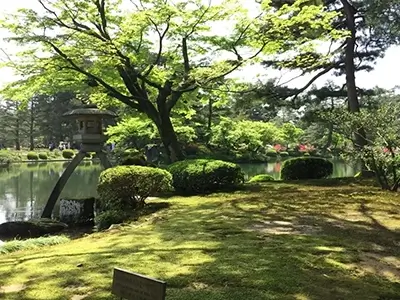
One of Japan’s “Three Great Gardens,” Kenrokuen is stunning year-round with plum blossoms in early spring, cherry trees, irises, autumn foliage, and even snow-covered pines in winter. The garden’s name means “Garden of Six Qualities,” reflecting a harmonious blend of space, seclusion, antiquity, and water features.
Kanazawa Castle
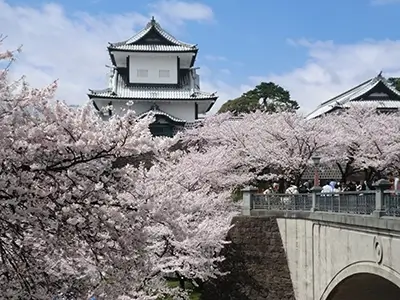
Just next to Kenrokuen, this historic castle complex has been beautifully reconstructed. Its wide courtyards and stone walls make it a pleasant walk for history buffs and photographers.
Higashi Chaya District
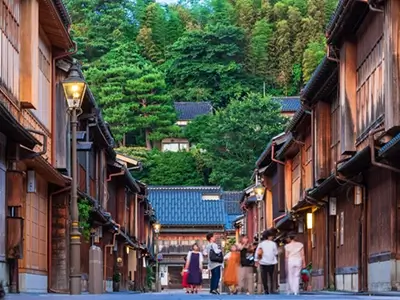
This is Kanazawa’s famous geisha district, where teahouses with wooden lattice façades line stone-paved streets. You can also visit the Shima or Kaikaro teahouses to experience the refined atmosphere inside.
Omicho Market
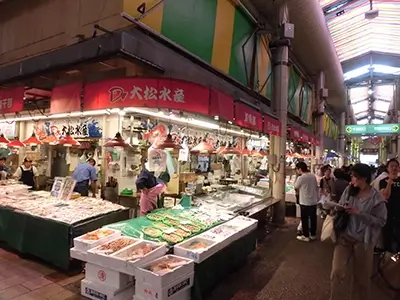
Known as “Kanazawa’s kitchen,” this bustling seafood market is a must-visit for sushi lovers. Try fresh oysters, grilled seafood skewers, or sea urchin bowls straight from local fishmongers.
21st Century Museum of Contemporary Art
A modern contrast to the city’s historic image, this circular glass museum features works from Japanese and international artists. Even the free outdoor installations are worth a visit.
Nagamachi Samurai District
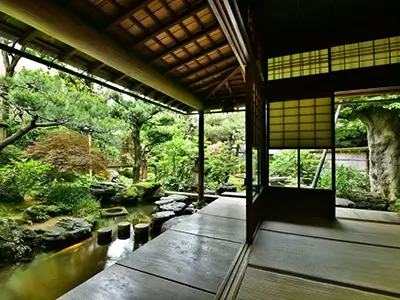
This preserved neighborhood features narrow lanes, earthen walls, and restored samurai residences like the Nomura-ke House. It’s a peaceful area that evokes life during the Edo period.
What to Eat & Where to Stay
Must-Try Foods in Kanazawa
- Kaisen-don (Seafood Bowl): Enjoy fresh local catches from the Sea of Japan at Omicho Market or local sushi restaurants.
- Jibuni: A hot pot dish made with duck meat, vegetables, and wheat flour dumplings in a soy-based broth—perfect in colder months.
- Gold Leaf Ice Cream: Kanazawa produces over 99% of Japan’s gold leaf. Try the edible version atop soft-serve ice cream for a fun local treat.
Where to Stay
- Ryokan Yamamuro: A traditional inn near the market, offering tatami rooms and local cuisine.
- UAN Kanazawa: A boutique hotel with a modern design and nightly soba service.
- Kanazawa Tokyu Hotel: Comfortable and central, ideal for first-time visitors. Staying near Korinbo or Kanazawa Station gives you easy access to most attractions on foot or by bus.
How to Get to Kanazawa
Kanazawa is well-connected to major cities in Japan, making it a convenient stop for travelers exploring the Hokuriku region.
From Tokyo
By Shinkansen (Hokuriku Shinkansen): Approx. 2.5–3 hours from Tokyo Station to Kanazawa Station via the Kagayaki or Hakutaka trains.
By highway bus: Takes around 7–8 hours, more economical but longer.
From Kyoto or Osaka
By Limited Express Thunderbird: Approx. 2 hours 30 minutes from Kyoto Station and 2 hours 45 minutes from Osaka Station to Kanazawa Station.
From Nagoya
By Limited Express Shirasagi: Around 3 hours via Maibara (transfer to Hokuriku Main Line).
From Takayama or Shirakawa-go
By Nohi Bus: Kanazawa is connected to both Takayama and Shirakawa-go by direct buses.
- Takayama → Kanazawa: Approx. 2 hours 15 minutes
- Shirakawa-go → Kanazawa: Approx. 1 hour 15 minutes
Station Info
Kanazawa Station is a major terminal with a beautiful modern design. Look for the Tsuzumi Gate, one of the city’s landmarks.
📍 You can easily explore Kanazawa on foot, or by using the Kanazawa Loop Bus for major tourist sites.
Guest Experience & Recommended Tours
“I didn’t know much about Kanazawa before coming, but the castle, gardens, and samurai district blew me away. The guide was incredibly knowledgeable, especially about local crafts. The lacquerware and Kaga Yuzen dyeing demo were unforgettable.”
Recommended Tours
Q&A – Kanazawa Travel Tips
Is it worth visiting Kanazawa?
Yes! It’s one of Japan’s most underrated cities, offering gardens, seafood, and well-preserved cultural districts without the crowds of Kyoto.
Why is Kanazawa so popular?
Its unique blend of tradition and modernity, plus proximity to natural beauty like the Noto Peninsula, makes it a favorite among travelers seeking authentic Japan.
Is Kanazawa closer to Tokyo or Kyoto?
Kyoto is closer—about 2 hours by limited express train. Tokyo is approximately 2.5 to 3 hours away via the Hokuriku Shinkansen.
What food is Kanazawa famous for?
Kaisen-don (seafood bowls), Jibuni (duck stew), and anything topped with edible gold leaf are all must-tries.
Visitor Info
Location
Kanazawa, Ishikawa Prefecture
Best Time to Visit
Spring and autumn offer pleasant weather and colorful scenery, but winter snow on the gardens and rooftops creates a magical atmosphere.
Main Attractions Admission
- Kenrokuen: ¥320
- 21st Century Museum: Free outdoor art, exhibitions from ¥400
- Nomura Samurai House: ~¥550